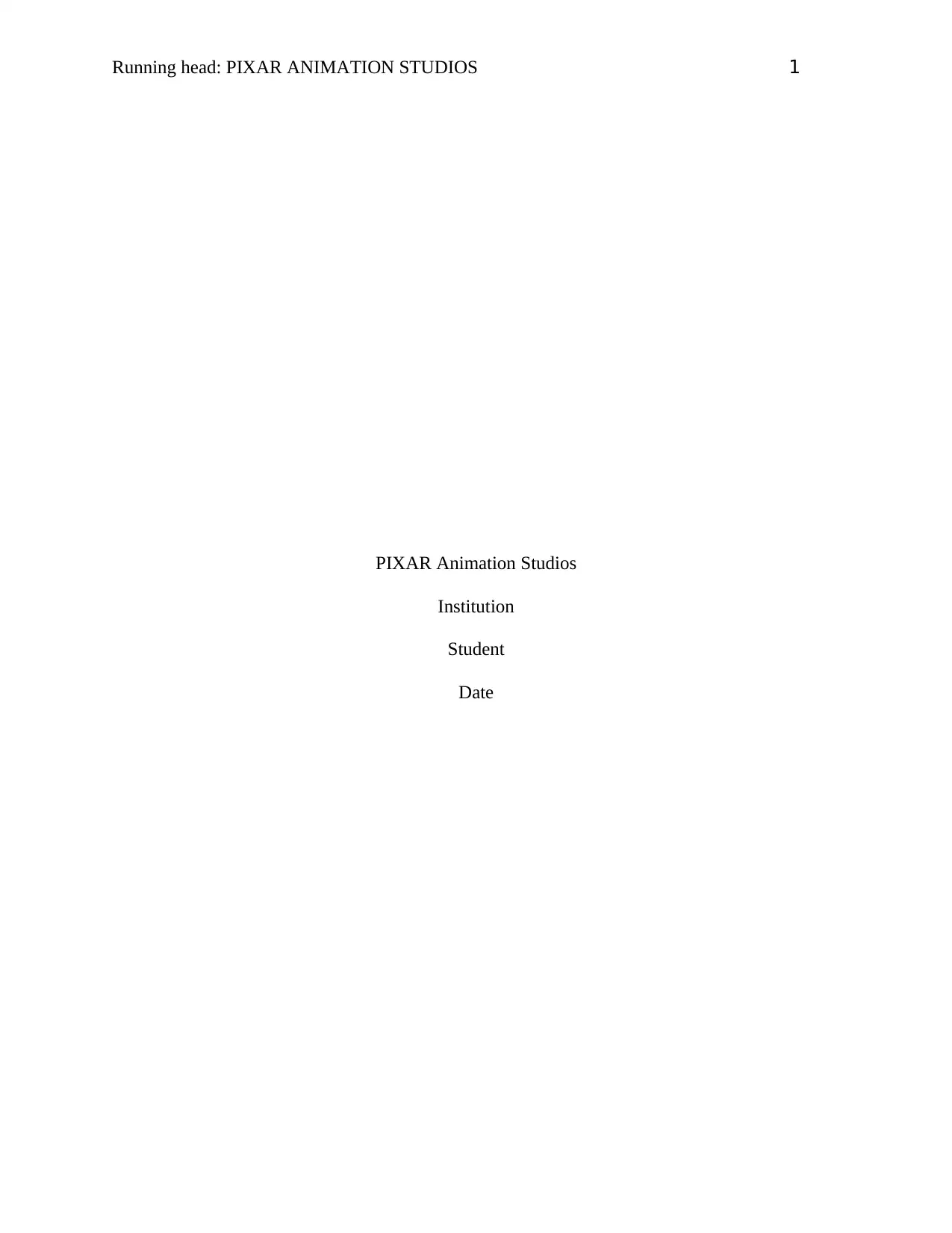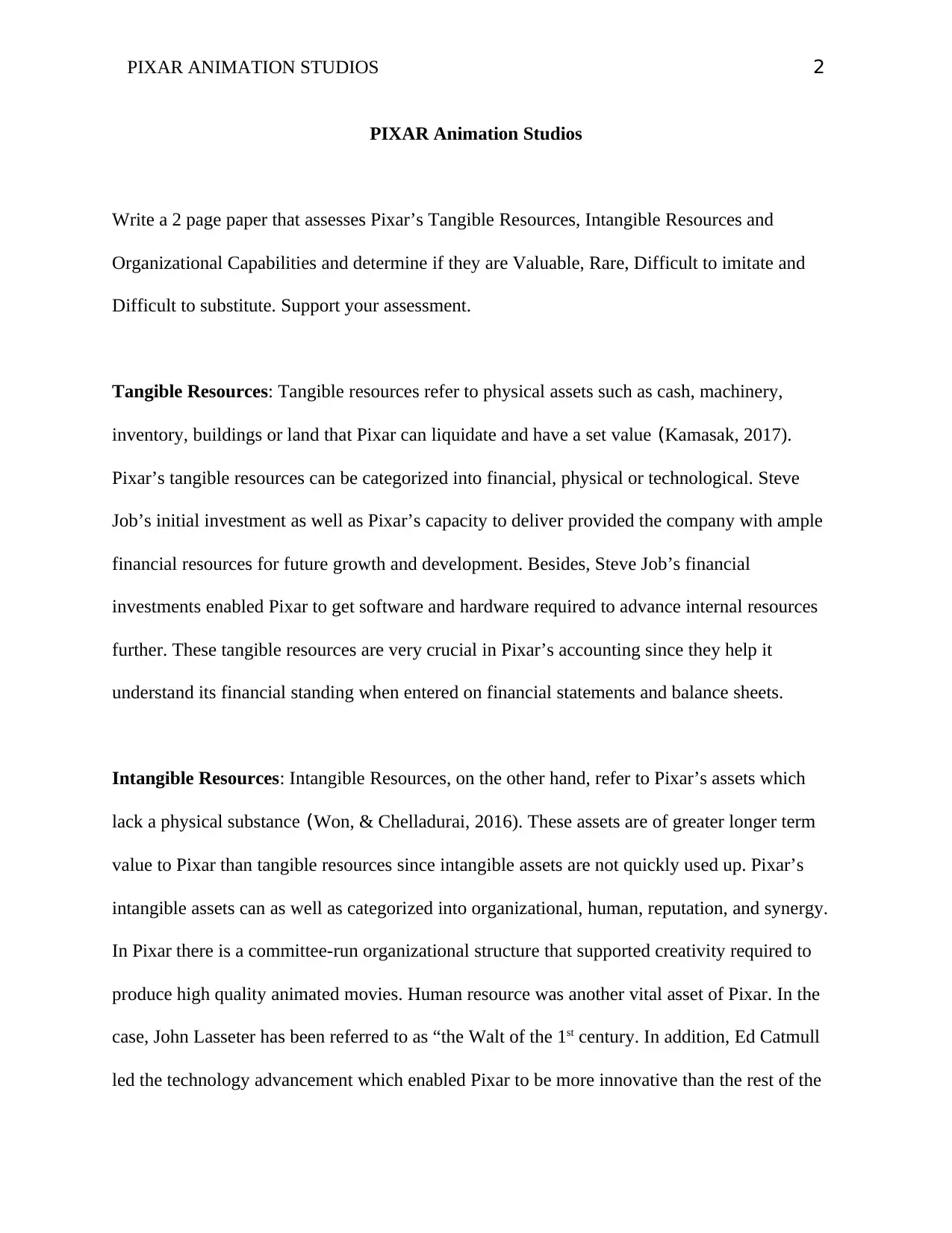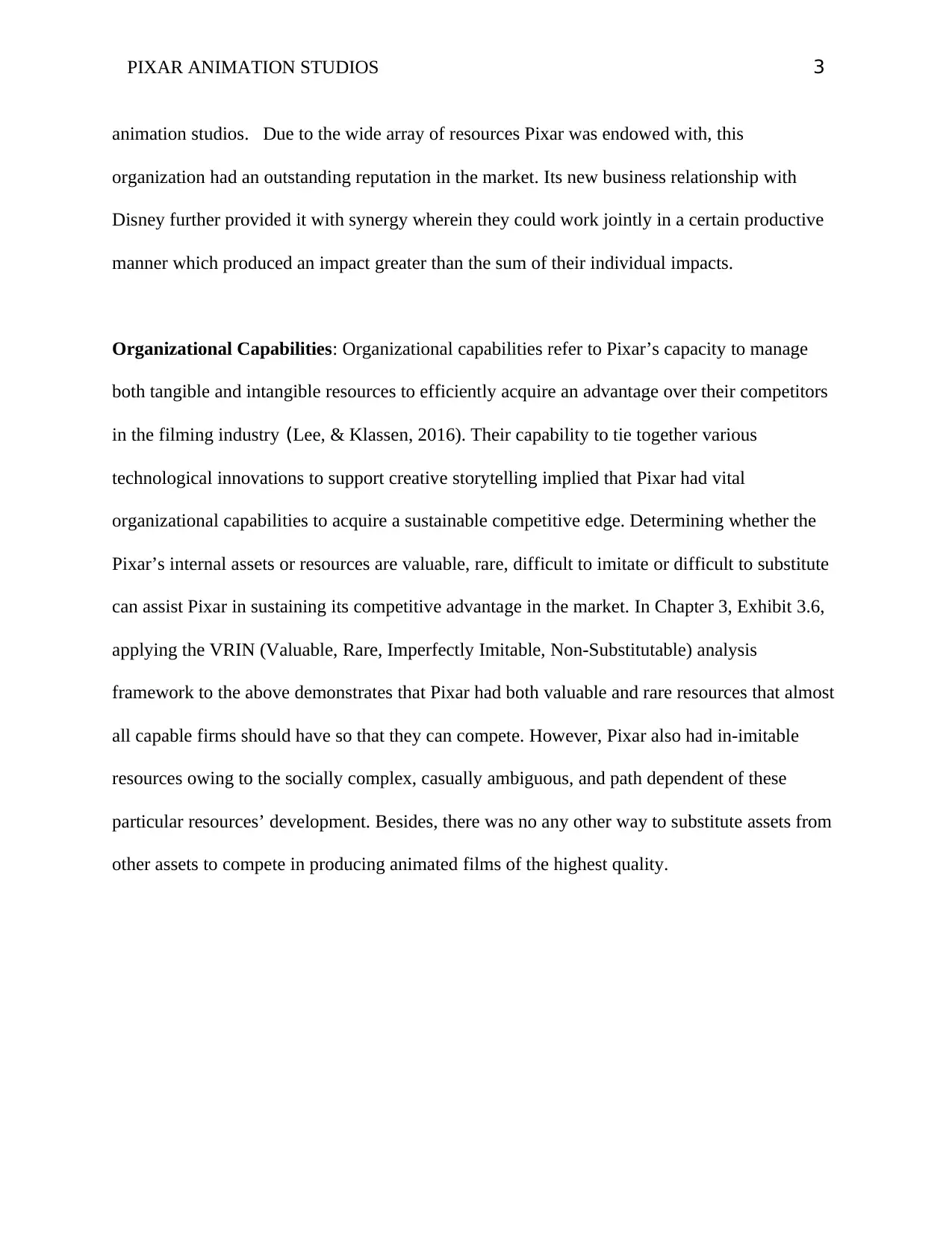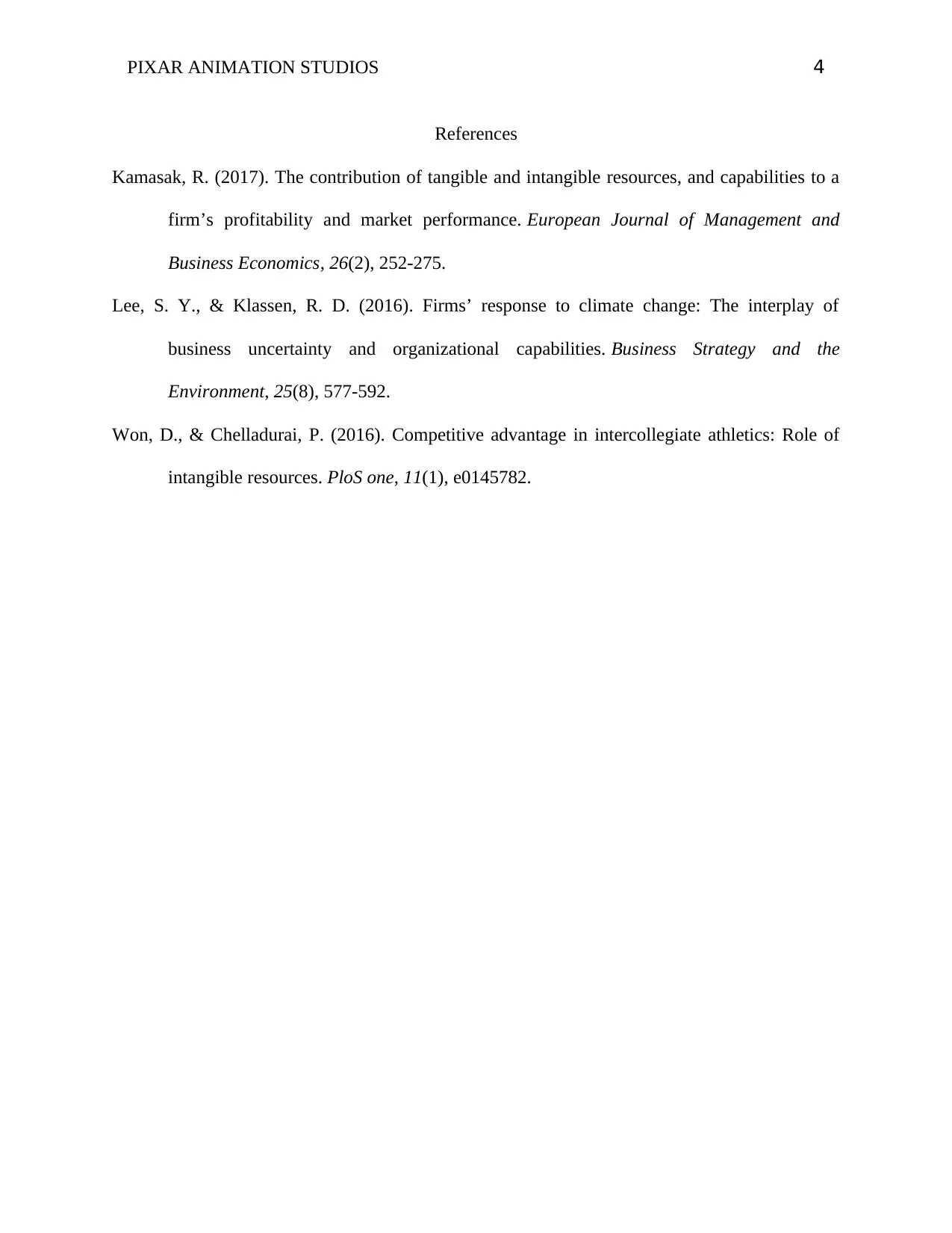Analysis of Pixar Animation Studios' Tangible and Intangible Assets
VerifiedAdded on 2022/11/13
|4
|703
|492
Report
AI Summary
This report assesses Pixar Animation Studios' tangible resources, intangible resources, and organizational capabilities, determining if they are valuable, rare, difficult to imitate, and difficult to substitute. It explores Pixar's financial, physical, and technological resources, including Steve Jobs' initial investment and software/hardware, highlighting their importance in financial statements. The analysis then delves into intangible assets, such as organizational structure, human resources (e.g., John Lasseter and Ed Catmull), and reputation, along with the synergy gained from the Disney partnership. The report applies the VRIN framework to demonstrate Pixar's valuable and rare resources, as well as in-imitable resources due to social complexity and path dependence, concluding that these factors contribute to its sustainable competitive advantage in the animation industry. The report is supported by references and APA format.
1 out of 4







![[object Object]](/_next/static/media/star-bottom.7253800d.svg)